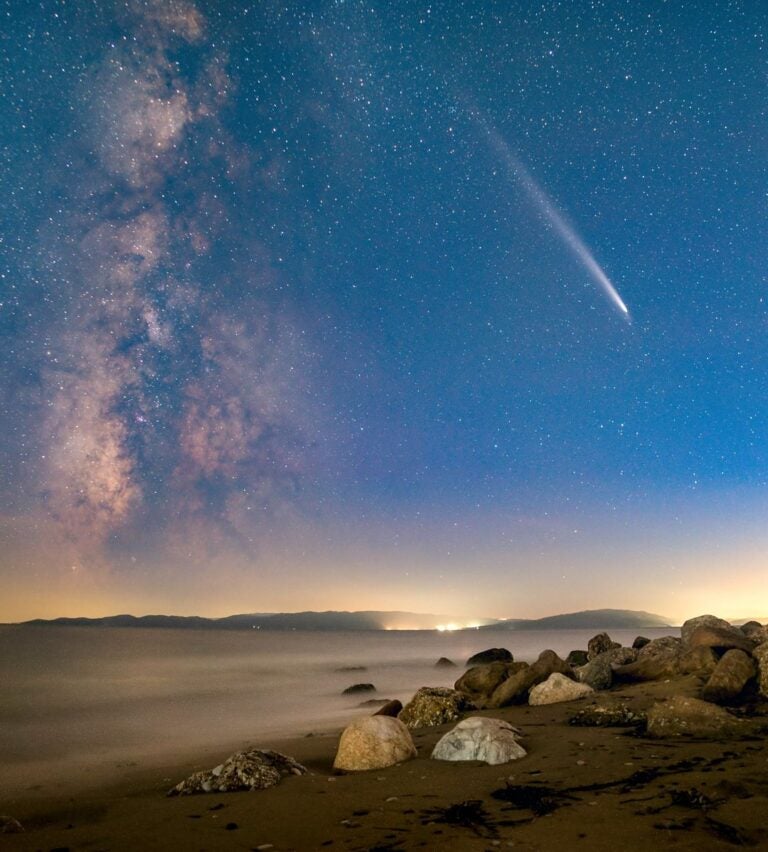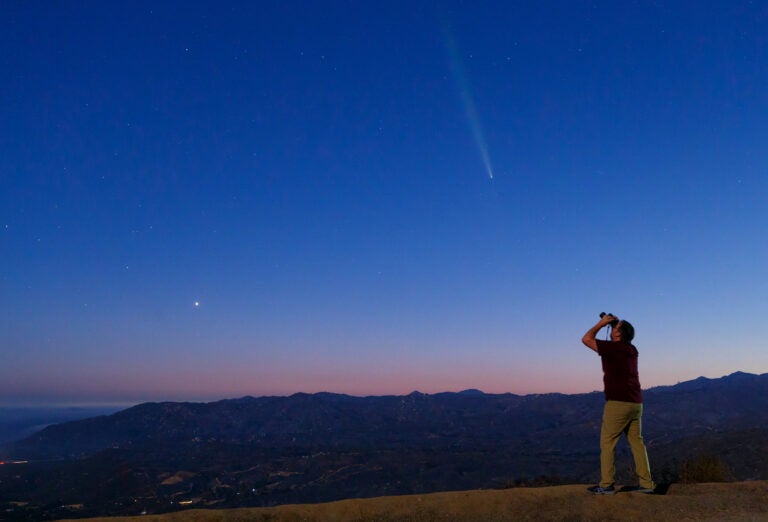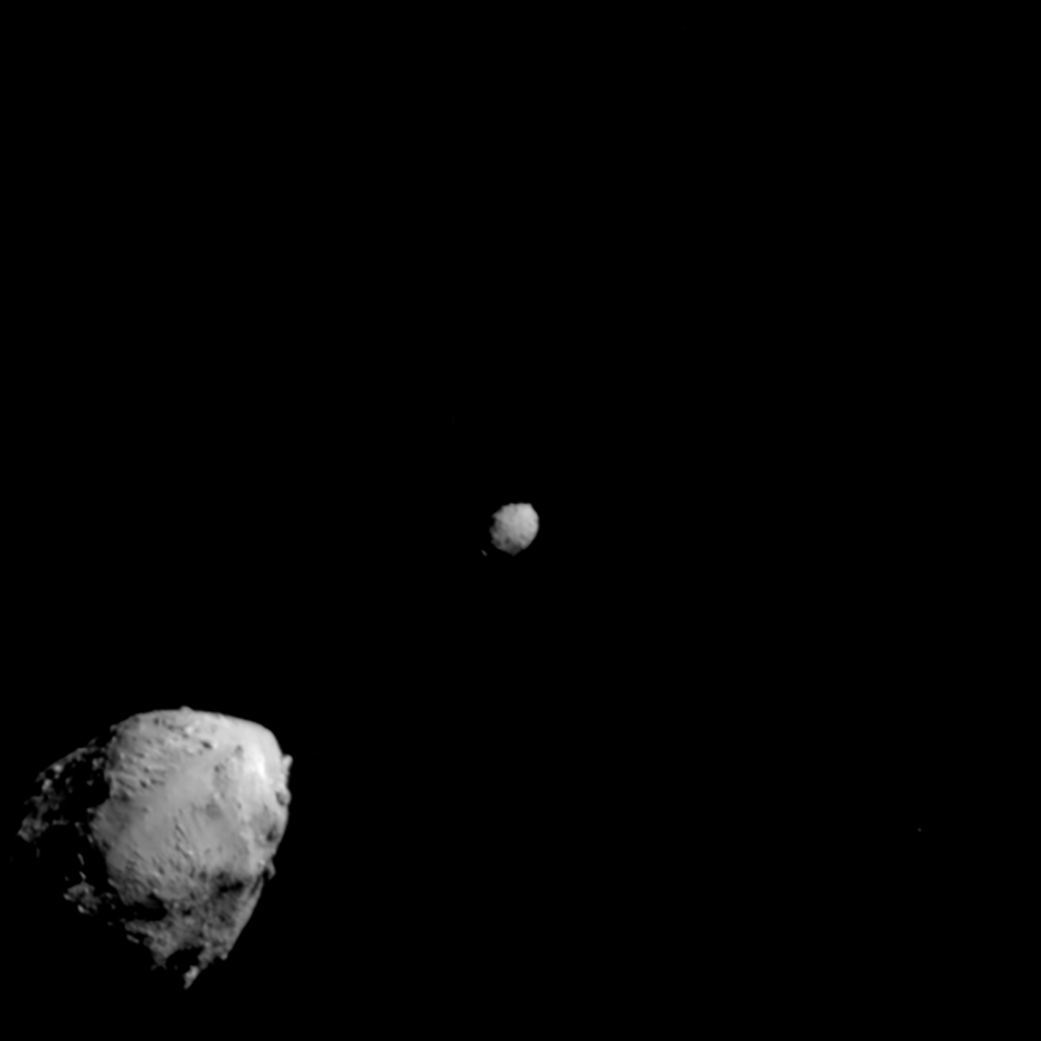
Stellar Stories
Hera spacecraft launched
The European Space Agency’s Hxera spacecraft launched on October 7, initiating an exciting exploration of an unusual asteroid. The solar system contains many thousands of small asteroid bodies, but the target here — 65803 Didymos, is a binary object spanning some 850 meters (about half a mile). The accompanying image shows Didymos at lower left and its moonlet, Dimorphos, recorded by the DART spacecraft in 2022.
Two years ago the DART mission slammed into Dimorphos, demonstrating that impacts into space rocks can alter their orbits. It was an important attempt to show that hazardous asteroids that could strike Earth can be redirected. More than 34,000 such objects exist in near-Earth space, and many large impacts have occurred in the past. They could be catastrophic in modern times. Hera will collect substantial data about the space rock and complete the picture on how risks from space rocks could be reduced in the future.
Europa Clipper delayed
Scheduled to launch on October 10, NASA’s ambitious Europa Clipper mission will now be delayed due to the onslaught of Hurricane Milton. NASA’s artwork, shown here, reveals how the spacecraft will appear when it arrives in orbital insertion in April 2030. A mission long dreamed of by planetary scientists, Europa Clipper will orbit Jupiter and study its moon Europa in a series of flybys. Europa has long been a poster child for the possibility of microbial life, as it contains a briny ocean beneath its icy surface.
Watery plumes are known to launch upward from the moon, which is the smallest of the four Galilean moons, slightly smaller than Earth’s Moon, and which orbits some 670,000 km (417,000 miles) from Jupiter. Instruments on Europa Clipper will produce a treasury of information about the moon and tantalizing clues about its subsurface ocean.
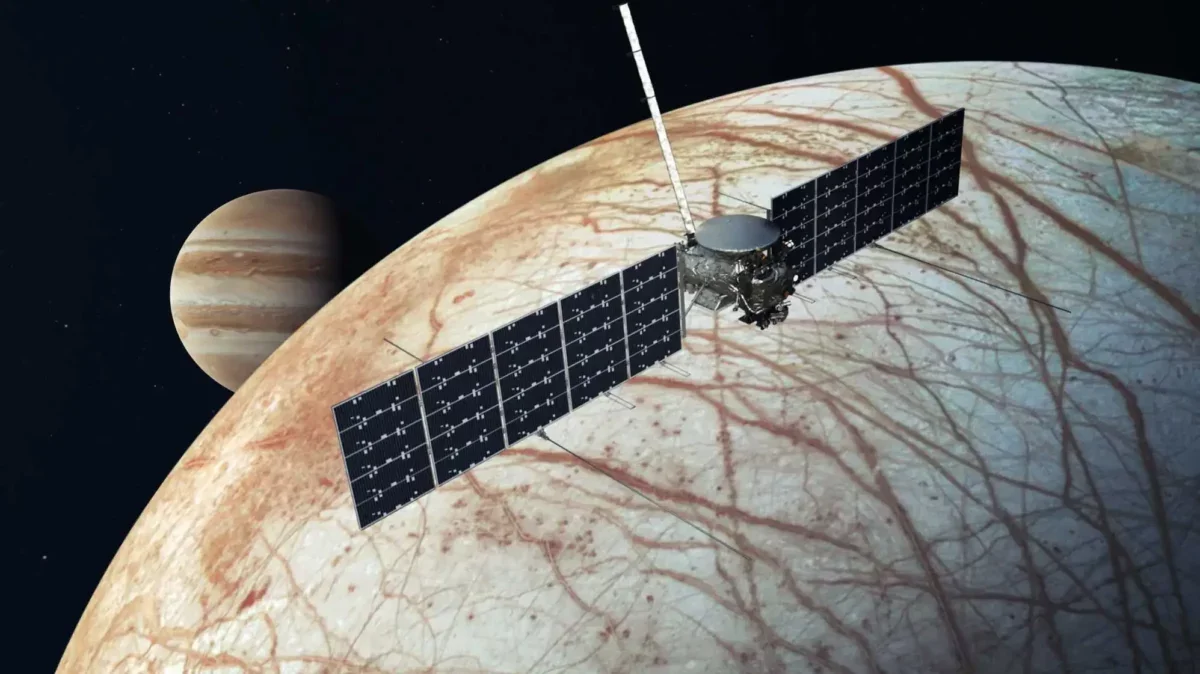
Oldest known galaxy like ours
On October 7 astronomers at the European Southern Observatory announced the discovery of the oldest rotating disk galaxy known, an object we see in the early universe, some 700 million years after the Big Bang. (The universe is now 13.8 billion years old.) Galaxy researchers believe our Milky Way’s disk assembled into its organized form some 9 billion years ago, and the current discovery pushes back the existence of a well-ordered, rotating galaxy that is structured to the early days of the cosmos.
The mystery to work on here is that astronomers have believed that galaxies in the early universe should be chaotic in structure and still assembling from lots of tiny protogalaxies. The galaxy, catalogued as REBELS-25, challenges the notion that galaxies are disordered messes for a long time before they assemble into stately, smoothly rotating systems. But this is not a problem, necessarily — scientists love a good mystery to work on.
Our Sky This Week
Get ready for a great comet
A bright comet is about to grace your evening sky. Discovered last year, Comet C/2023 A3 Tsuchinshan-ATLAS is already a graceful sight, at about 2nd magnitude, and is swinging around into the evening western sky just after sunset. I saw it last week in the morning sky from Easter Island and it was splendid, with a bright nucleus and a long tail. Over the next few days look very low in the west soon after sunset (Venus will also be visible relatively nearby), and you will see the comet gradually becoming easier to see — especially by this weekend — as it slowly rises.
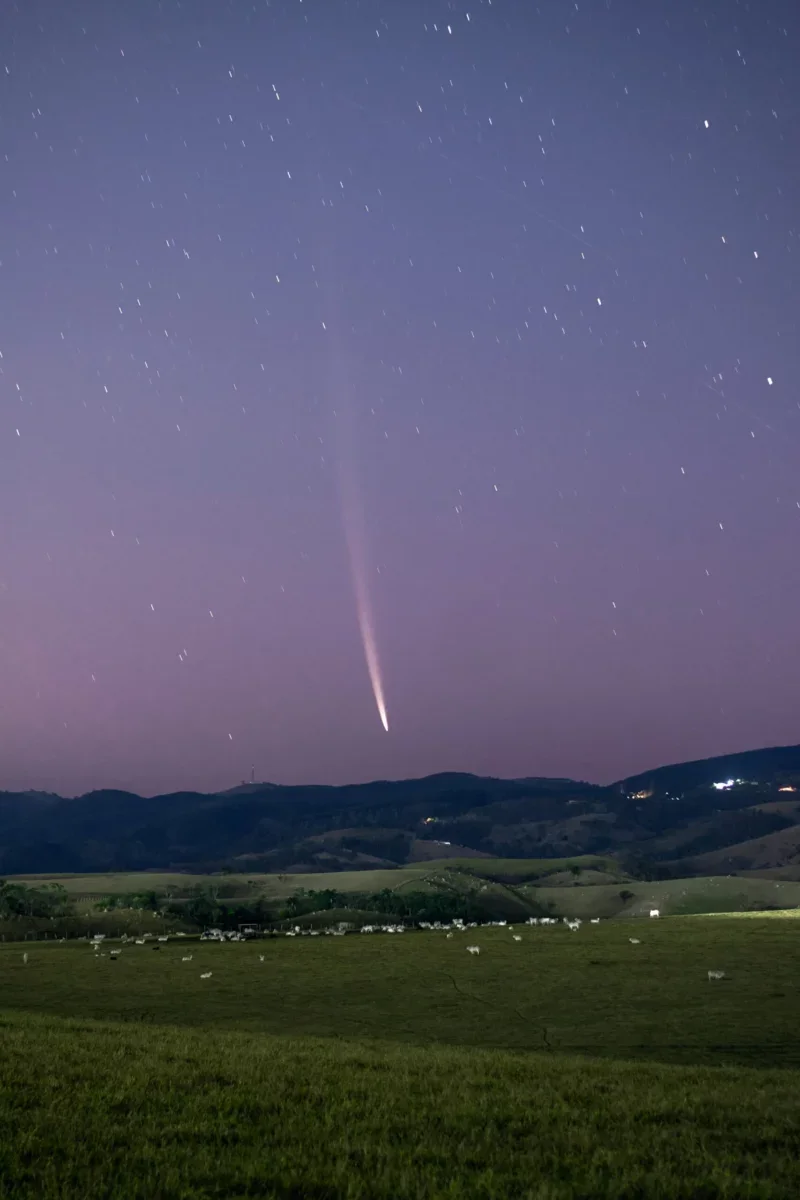
From Caçapava, São Paulo, Brazil, Jean Cursino captured the comet as it appeared several days ago as it passed its closest point to the Sun (see the accompanying image). The comet gradually moved closer to Earth until it reached its closest approach to us on October 12, some 71 million kilometers (44 million miles) away. A bright comet comes along on average only every few years, so the opportunity to see this celestial visitor in Earth’s skies is a somewhat rare treat for stargazers. Binoculars or a small telescope at low magnification will show the comet well, and it will be reasonably easy to photograph, too.
Word of the Day
I begin with one of the most peculiar words in the world of astronomy: syzygy (pronounced: SIZ-eh-jee). This odd term, developed from ancient Greek, simply means a straight-line alignment of three or more celestial bodies. We just experienced one on Earth, although you had to be practically in the middle of nowhere to see it. Last week I accompanied a group of intrepid travelers to Chile and then on a 5-1/2-hour flight westward to Easter Island, a truly exotic place in Oceania. Besides enjoying seeing many of the island’s nearly 900 Moai, its ancient statues, we enjoyed an annular eclipse of the Sun that lasted an impressive 5 minutes 48 seconds. This was a syzygy — a straight-line alignment of the Sun, Moon, and Earth.
The Observatory
One hundred and one years ago last week a young astronomer named Edwin Hubble made one of the most famous photographs in the history of science. At Mt. Wilson Observatory above Los Angeles, he exposed a glass plate negative of what was then termed a spiral nebula in Andromeda, M31, a favorite object of Hubble’s. Carefully studying the image, he was pleased to see what he believed was an exploding star, a nova. A few days later he checked earlier images of the nebula and nearly fell out of his office chair. The star was not a nova but a particular type of variable star that was quite well known. He used the star’s apparent brightness to calculate its distance and was shellshocked. He calculated it to be a million light-years away, then three times the size of what astronomers considered the extent of the entire cosmos.
We now know the Andromeda Galaxy lies 2.5 million light-years away. In a single image, Hubble discovered the nature of galaxies and the immense cosmic distance scale of the universe. Think of that moment, just a century ago, when you gaze up at the Andromeda Galaxy tonight.
More from the Latest Issue
The October issue of Astronomy leads you through the complex world of deep-sky objects. This term refers to objects in what astronomers call deep space, the vast universe beyond our solar system. Pick up a copy of Astronomy on your newsstand today and visit Astronomy.com to see everything the brand offers.

